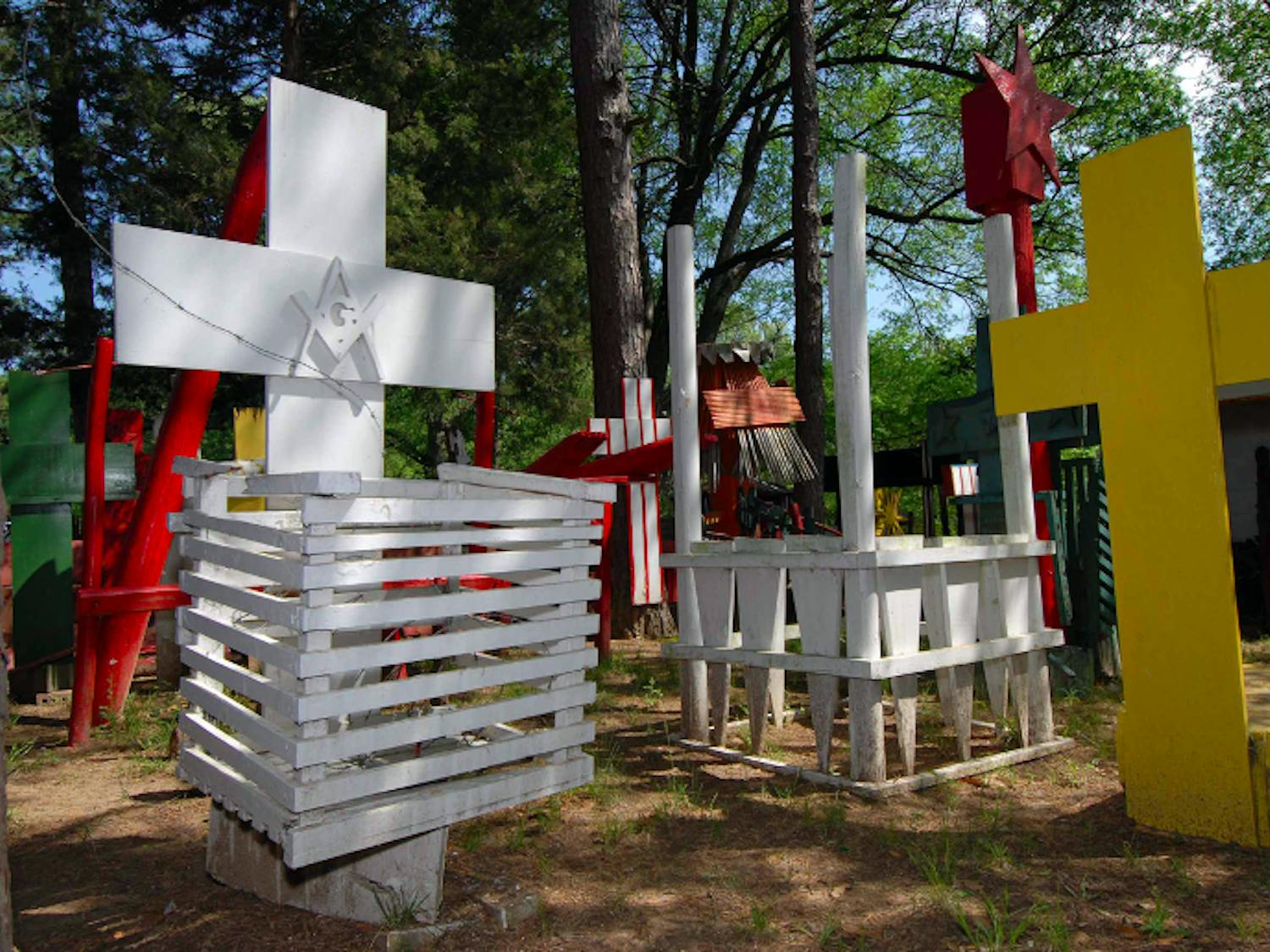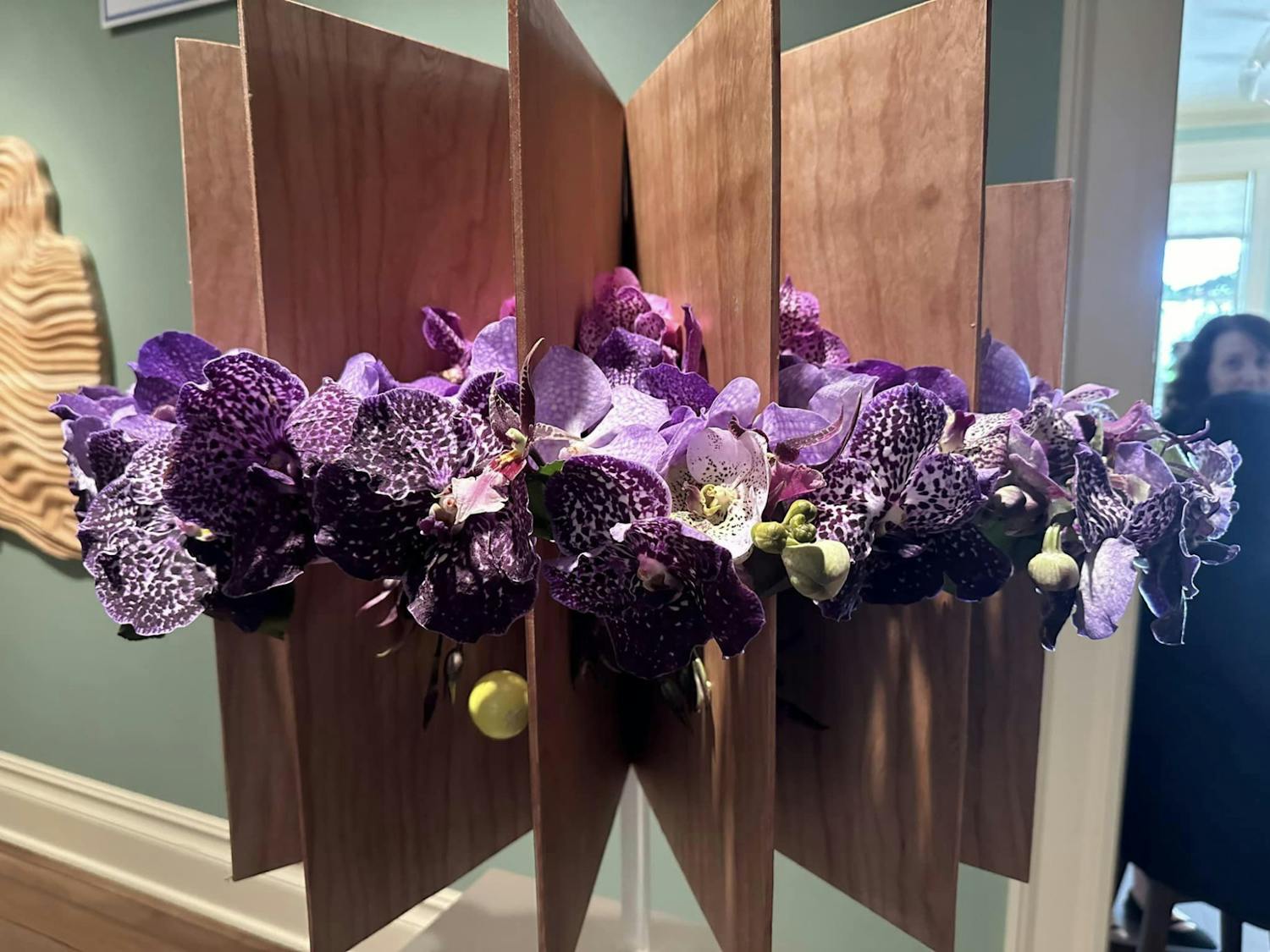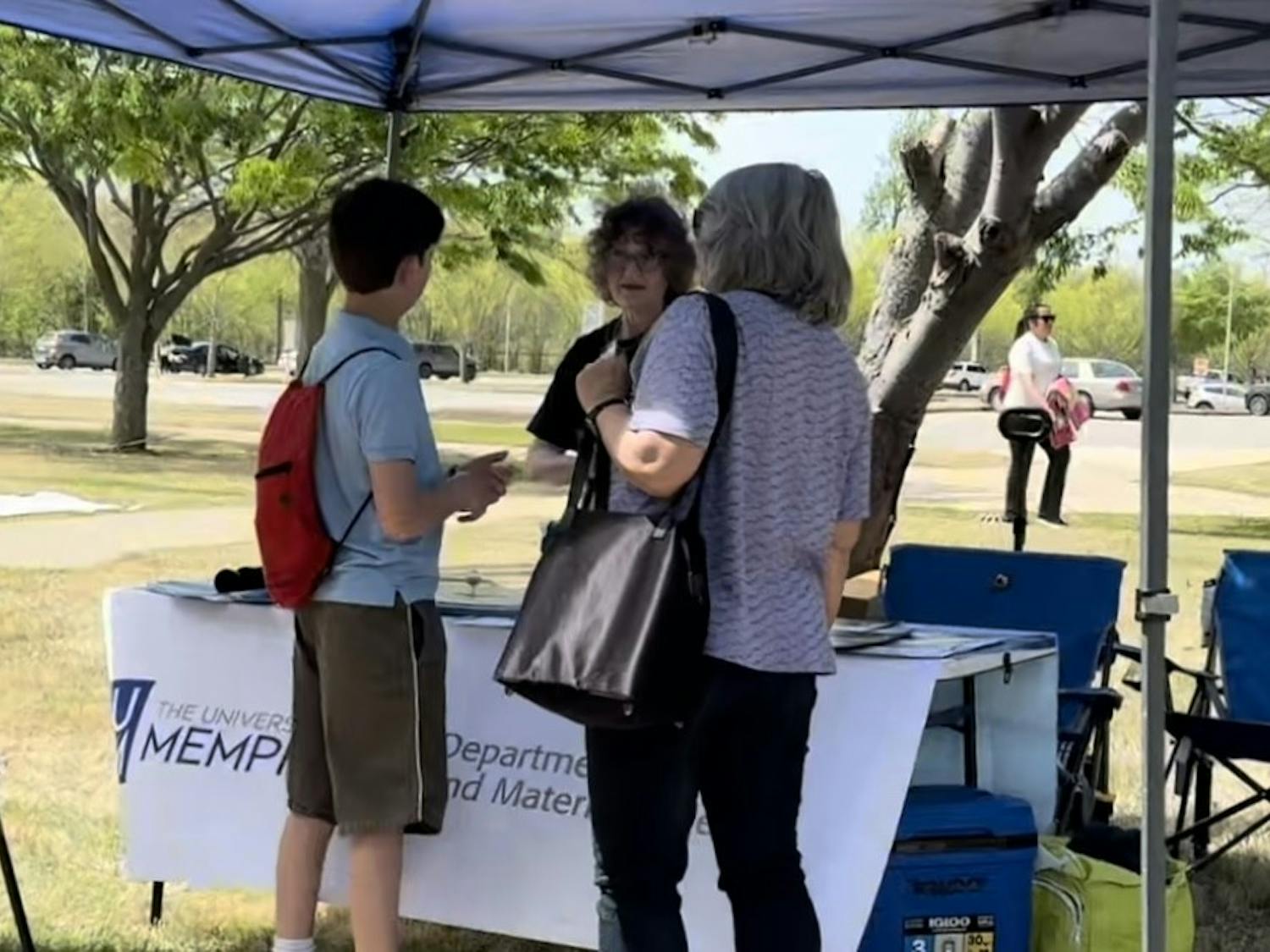Despite feeling like a decade has passed, the walk to the library has not changed. The only difference is that campus was a ghost town, the walk was ominous and quiet. The trees were just as they were when classes first went remote in the spring,it is hard to believe it is already practically Fall.
It is still a long walk to the first set of sliding doors that open automatically. The next set requires an ID scan, a new COVID-19 protocol. The center of the library, without students to fill it, is a hollow core with its glass windows and four floors that wrap around.
There are four flights of stairs, each level is supposed to be quieter than the previous, the fourth floor is meant to be silent, but for whatever reason it was the loudest. It was probably the only other student there that morning, he was doing an interview of sorts.
Not far over is an exhibit featuring historic documents detailing the suffragist movement, secured behind glass display cases, and scan prints of old political cartoons from a suffragist, Nina E. Allender.
A sign hung from the ceiling, “Special Collections” in the typical University of Memphis blue and white. There are two doors, one with a stop sign, the other a window and a COVID-19 update posted letting students know access was only available by scheduled appointment.
Through the window, into the space, no one seemed to be around. It was just a hallway lined with offices, leading to an open room with an array of cardboard boxes.
It is a place that nobody around campus knows much about. When asked about it, all that is returned are blank stares and the occasional “oh the place inside the library? I’ve never been.”
Michael W. Harris, a Ned McWherter research and instructional librarian, was once an archivist for special collections at the University of Colorado-Boulder. While not one at the UofM, he knows about the many unexpected things that find their way into archives of higher education libraries.
These collections, which are typically donated by prominent people wanting their collections preserved, sometimes come in trash bags or straight from filing cabinets and boxes.
According to Harris, it is the archivist’s job to piece everything together and make sense of items so they are presentable. Harris describes it as a game of Tetris and he recalls the time he was processing the collection of an American writer,
“I came across a box of a manuscript for a book of his that was actually never published,” he said. “Everything was out of order, out of sorts, but I could tell just by going through it that it looks like there's like two or three separate drafts of this book but they've all been jumbled together.”
On a summer day with no classes, Harris spread everything out and was able to sort the book, and even connect it to other events in the author’s life.
Interestingly, after he was able to put it to use, a documentary filmmaker, who knew about the author’s preserved collection asked to cite the unpublished book. A book that would have never seen the light of day, got a second chance to be appreciated.
“Special collections, and even libraries to a certain extent, part of their mandate is to preserve these items, these books, this knowledge for subsequent generations,” Harris said. “What makes Special Collections libraries really interesting in terms of just the overall mission of higher education is that they make this material available for research for students to experience.”
Even the weirder items that McWherter Library has collected, or have been donated, are all sorted and preserved to their best.
Brigitte Billeadeaux, special collections librarian and archivist, said there are a lot of weird things people donate like a pegleg and saber with dried blood from the 19th century Civil War era. There is even a book, once believed to have been made of human skin, in the collection.
“We have a kkk robe, specifically a woman's kkk robe, which I always kind of [believe has] some bad juju so I don't like to pull that out but it's so strange that we would even have that in the first place,” she said. “But then again it’s something that someone donated at some point.”
Memphis, being a place that is so immersed in the civil right movement, has an immense collection of related documents and artifacts. Historical tidbits such as signs from the sanitation worker’s strike, that Martin Luther King attended before being assassinated, can even be found.
Billeadeaux said digitizing more items and having online archives is the direction things are moving.
“Well I personally have an agenda to get under-represented minority communities more represented in our archives,” she said. “So that means taking a look back at things that we have already and then trying to get other collections. We have a wonderful Latinx community. We don't surprisingly have as much from the African American community as you would think so I think that right now in special collections. We really, I personally want to focus on finding those different narratives and making them available and accessible. ”



